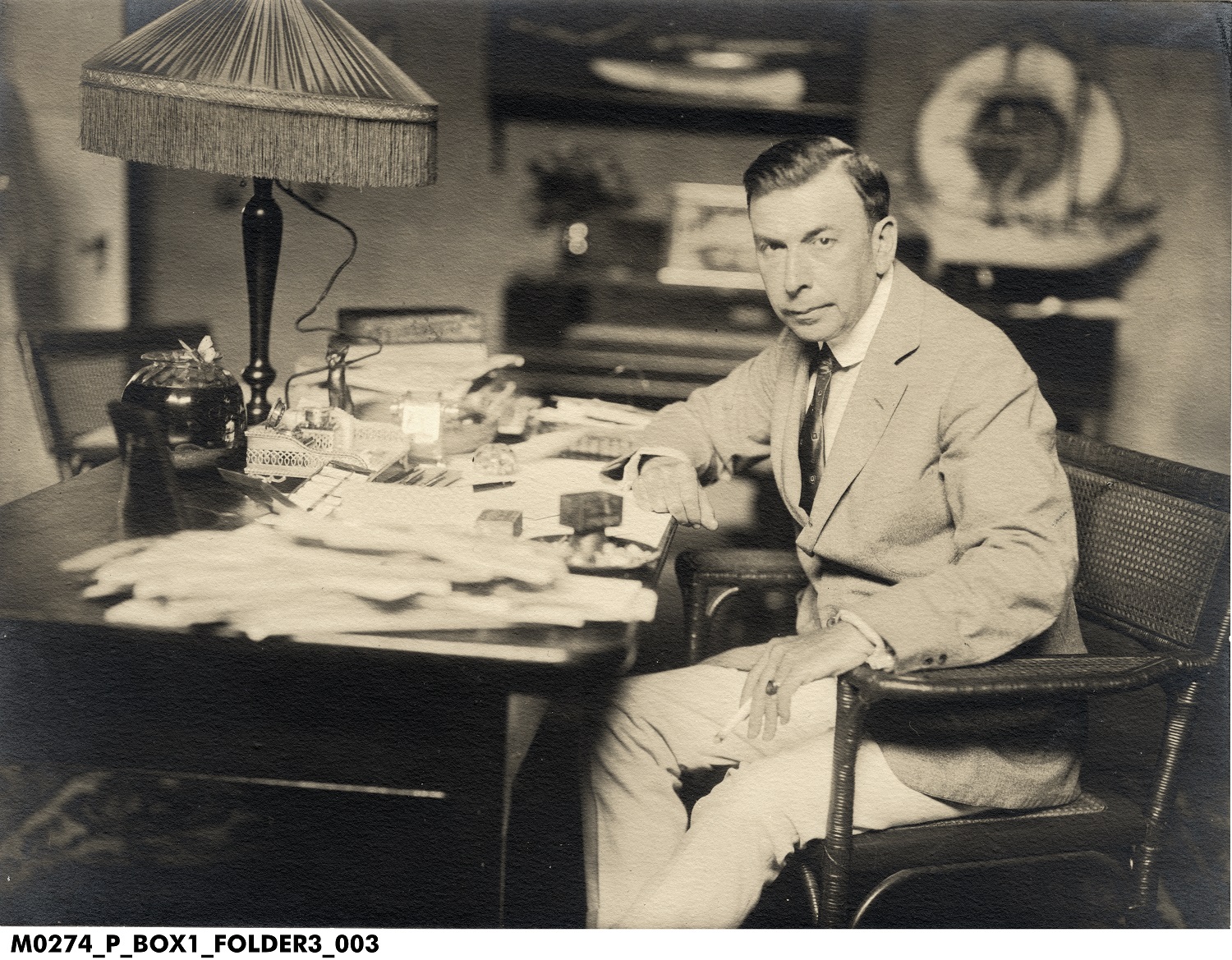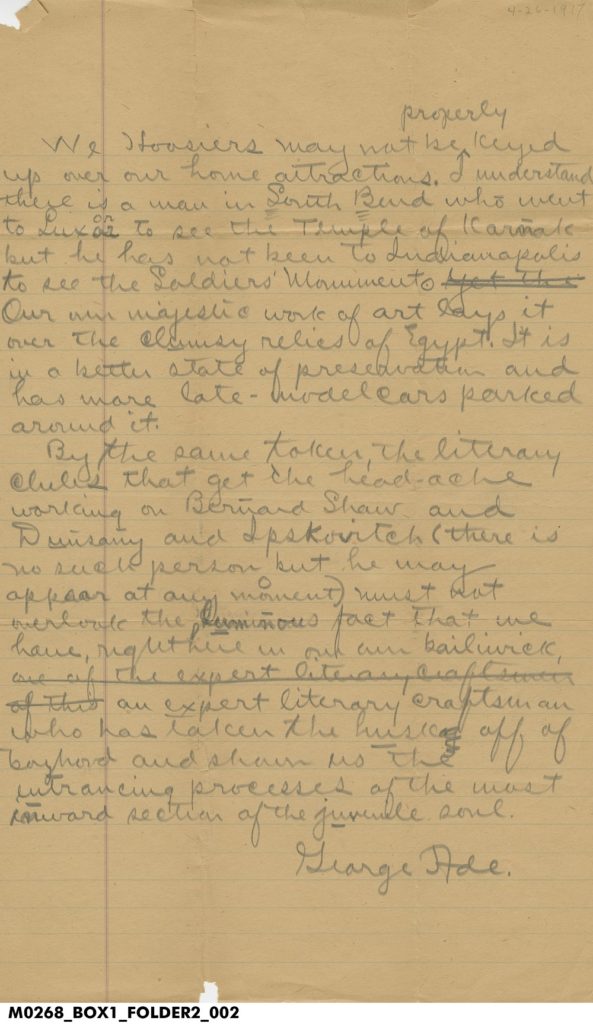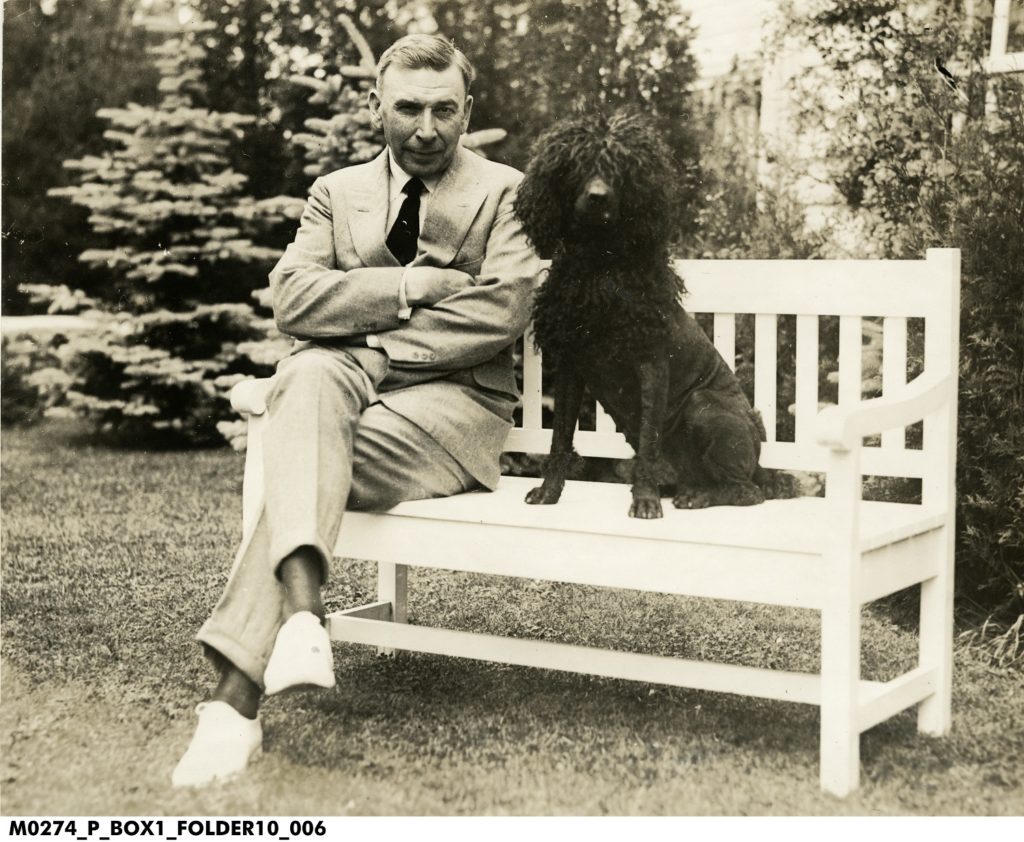
Purchase Tickets
Talking Tarkington
February 24, 2023

Though I am quite familiar with the person that is Newton Booth Tarkington (1869-1946), I have sadly not read any of his works, at least not within my recollection. I say that because I recently went through some of my OLD college notebooks and found the following notation:
- “Newton Booth Tarcanton [Apparently, I could not spell Tarkington by ear.]
- Southern roots in Indiana [What does this even really mean?]
- attended many colleges [Not really—I hardly consider Purdue and Princeton ‘many’.]
- 1899–The Gentleman from Indiana–hit [This is true, The Gentleman from Indiana was well-received.]”
Sadly, I have no recollection of which class I was taking when these notes were scribbled and whether I was encouraged or required to read even a sampling of his work. I was a student at an Indiana college, although one in the, somewhat separated, Northwest corner of the state, and yet, my knowledge of Tarkington was lacking.
As you can see from my modern, bracketed annotations provided within my 20+-year-old notes above, I look back and realize how minimal this passing mention of Tarkington is compared to his true legacy. Though The Gentleman from Indiana was indeed well-known, it was not, by any stretch, the pinnacle of his career. Tarkington is one of only four authors that have won the Pulitzer Prize for Fiction twice, sharing that honor with William Faulkner, John Updike and Colson Whitehead.

George Ade’s Praise of the Penrod Series,
Indiana Historical Society
Booth Tarkington was also well-known for his best-selling Penrod series of books for boys. Tarkington’s contemporary and fellow author, George Ade, stated the following about him in praise of the release of another title in the Penrod series:
“…the same literary clubs that get the head-ache working on Bernard Shaw and Dunsany and Ipskovitz (there is no such person but he may appear at any moment) must not overlook the luminous fact that we have right here in our own bailiwick an expert literary craftsman who has taken the husk off of boyhood and shown us the entrancing process of the most inward section of the juvenile soul.”
In reviews and critiques of Tarkington’s books, racial stereotyping and insensitivity is noted as an underlying tone difficult to get past. Though Tarkington didn’t shy away from including Black characters in his works, he did rely on unkind and racist characteristics and language patterns. This is especially noted in his Penrod series but is found in his other works as well. Perhaps this is part of the reason his popularity has not been as enduring as other authors. However, another possibility is that Tarkington didn’t provide enough focus to draw the attention of readers and keep it as his writing styles and genres varied across time.
Last, but not least, I share a well-known picture of Tarkington and his dog, Figaro, because dogs are cute.

Booth Tarkington with his poodle, Figaro, ca. 1940, Indiana Historical Society
Visit the Library between now and May 4 to see our Translating Tarkington exhibit. It features many works by Tarkington that were translated into different languages, including Urdu, Chinese, Danish, Polish and more. These translations highlight Tarkington’s prominence and popularity throughout the world in his time.









